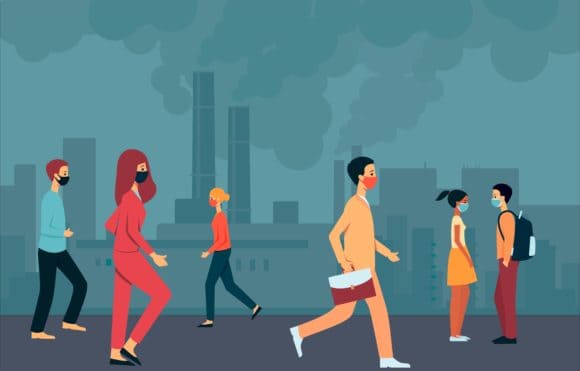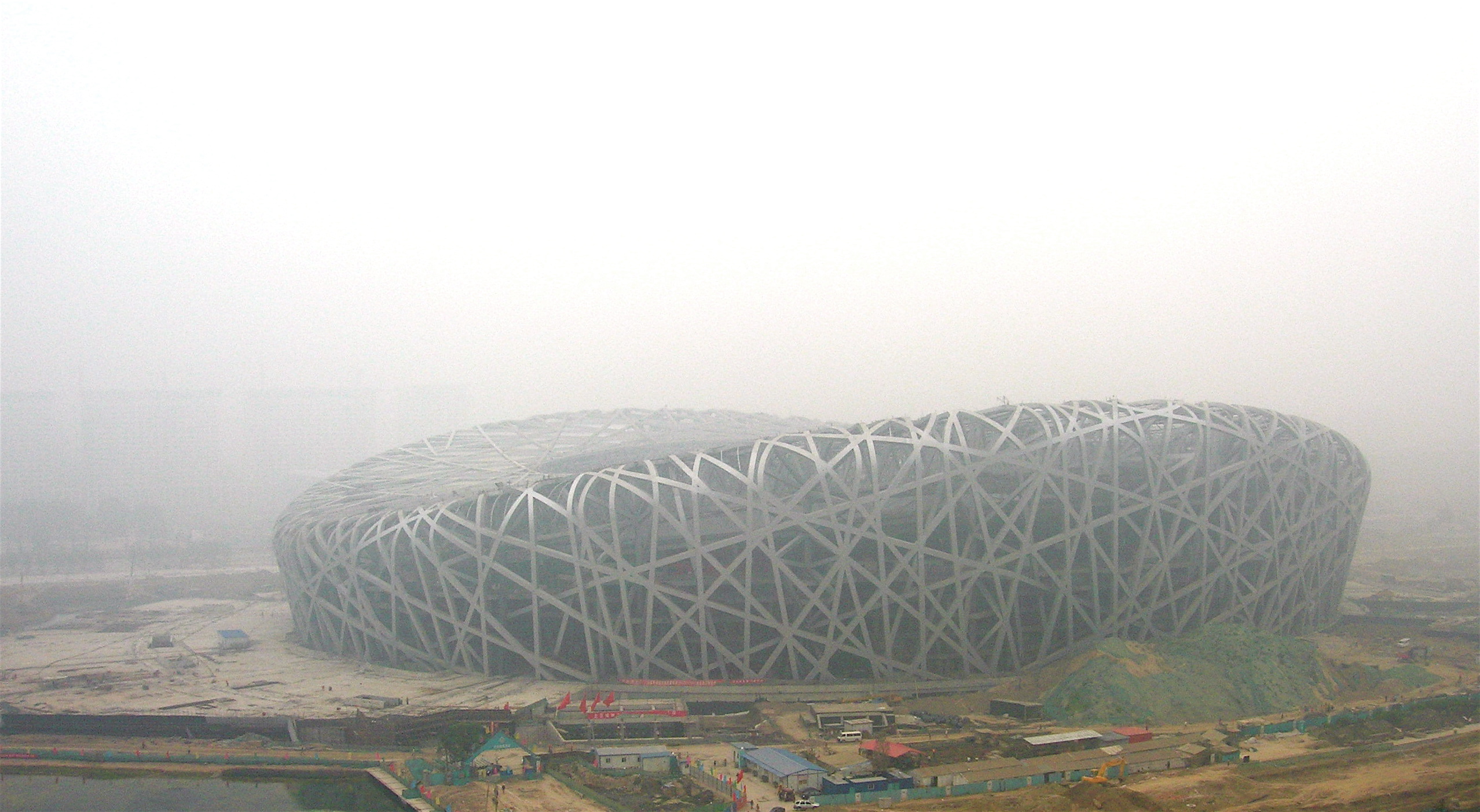Jan 29, 2020 | Demography, Health, Wellbeing
By Sonja Spitzer, research assistant in the IIASA World Population Program
Sonja Spitzer discusses how survey data often fails to capture all socioeconomic groups and explains how to ensure health information used by policymakers is based on accurate statistics.

Life expectancy continues to increase in Europe. We live longer, but do we live healthier? One way of tackling this question is by analysing health expectancy: a widely used indicator that counts the number of years an average person can expect to live in good health. To create this indicator researchers usually combine information about mortality with health data from surveys – and this is where many problems begin.
Survey participation is shaped by socioeconomic differences
Surveys do not always correctly represent the countries they seek to describe. A common deviation is that highly educated individuals are more likely to participate in surveys than less-educated individuals This is problematic for health research in particular, because highly educated people tend to be healthier than those who are less educated. Overrepresenting healthy and better educated individuals in surveys makes countries appear to have healthier populations than is the actual case. A recent study I conducted, that focused on European countries, showed that health expectancy measures are frequently upward biased, because less-educated people are underrepresented in the underlying data. The results of this study reflect the outcomes of other research; for example, estimates of rates of diabetes and asthma in Belgium are too low because individuals with a high level of education are overrepresented in the core data. In the Netherlands, the underrepresentation of those with lower levels of education has led to underestimating smoking prevalence, alcohol intake, and low levels of physical activity.
Make everyone count with statistical weights
Are you now wondering if you can ever trust health measures again? Do not despair! Surveys can still be a very useful source for answering health-related questions if the appropriate statistical tools are used. It is possible to account for the misrepresentation of participants with lower levels of education in surveys. The only thing needed is accurate information about the education structure of the population, that is: How many highly educated versus less-educated individuals live in a given country? In Europe, this information is readily available via censuses. Using information from censuses makes it possible to calculate statistical weights for surveys. If the less educated are underrepresented in surveys, each observation of a less educated individual is weighted relatively more than those with a higher level of education to account for the misrepresentation. This weighting enables surveys to resemble the population in the real world and the health measures that are based on them to no longer be biased by educational differences in survey participation.
Why do the less educated not participate in surveys?
Using survey methods such as statistical weights might become even more necessary in the future – it appears that the gap in survey participation between the higher and the less-educated is increasing year upon year. Those with low levels of education are frequently more difficult to engage, for example, less educated people can have less stable life paths and thus more often change their address. They may be less likely to provide requested information in surveys because they are too sick to participate or are less aware of the details of their health and financial situation. Finally, survey participation is usually voluntary and those with lower levels of education are more likely to refuse participation. One could speculate that this refusal to participate is because we, as researchers fail to engage with, or reach out to, less-educated individuals and the “value” of participating in surveys is therefore not well-communicated. This concern seems particularly important in the age of ‘fake news’. If less-educated individuals were better represented in surveys, this would make official statistics more reliable and might also lead to a better appreciation of statistics and how they can be more profound indicators than, for example, an opinion posed by someone on TV.
References:
[1] Demarest, S., Van Der Heyden, J., Charafeddine, R., Tafforeau, J., Van Oyen, H., Van Hal, G.: Socio economic differences in participation of households in a Belgian national health survey. European Journal of Public Health. 23, 981–985 (2013). DOI:10.1093/eurpub/cks158
[2] Korkeila, K., Suominen, S., Ahvenainen, J., Ojanlatva, A., Helenius, H.: Non-response and related factors in a nation-wide health survey. European Journal of Epidemiology 17, 991–999 (2001)
[3] Reinikainen, J., Tolonen, H., Borodulin, K., Härkänen, T., Jousilahti, P., Karvanen, J., Koskinen, S., Kuulasmaa, K., Männistö, S., Rissanen, H., Vartiainen, E.: Participation rates by educational levels have diverged during 25 years in Finnish health examination surveys. European Journal of Public Health. 28, 237–243 (2018). DOI:10.1093/eurpub/ckx151
[4] Spitzer, S., Biases in health expectancies due to educational differences in survey participation of older Europeans: It’s worth weighting for. The European Journal of Health Economics. (2020) IIASA doi:10.1007/s10198-019-01152-0. http://pure.iiasa.ac.at/id/eprint/16281/
Note: This article gives the views of the author, and not the position of the Nexus blog, nor of the International Institute for Applied Systems Analysis.
Nov 6, 2019 | Climate, Climate Change, Health, Young Scientists
By Luiza Toledo, IIASA Science Communication Fellow 2019
2019 YSSP participant Rory Gibb discusses his work at IIASA developing models to understand the effects of future land use, climate, and socioeconomic change on disease risk, focusing on Lassa fever in West Africa as a case study.

© Seth Doyle | Unsplash
Climate change is a fact and one of the most important environmental changes that populations will face in the coming decades. Changes in areas such as agriculture, energy, economics, and biodiversity, together with other natural and human-made health stressors, influence human health and disease in numerous ways. This is evident in the fact that the emergence and spread of many infectious diseases is on the rise, many of them transmitted from wildlife to humans – a trend that has been associated with the environmental changes we are currently experiencing. Warmer average temperatures can mean longer warm seasons, earlier spring seasons, shorter and milder winters, and hotter summers, during which the prevailing conditions may affect the population cycles of hosts, vectors (such as mosquitoes and ticks) and pathogens, thus increasing the incidence of certain vector-borne or zoonotic diseases. Changes to land use, such as expansion of agriculture, can impact ecological communities and bring people into greater contact with wildlife, again potentially facilitating the spread of pathogens.
Rory Gibb, a 2019 Young Scientists Summer Program (YSSP) participant, is doing research to understand how global environmental changes – and in particular interactions between land use and climate change – affect zoonotic (animal-borne) infectious diseases. He applied for the YSSP this summer because of the institute’s research portfolio in different dimensions of human wellbeing, including poverty and inequality, food security, and water resilience. He hopes to contribute a dimension about infectious diseases.

©Liebentritt_Christoph | IIASA
Gibb is interested in understanding how the same kind of environmental pressures that affect biodiversity and ecosystems, such as agricultural expansion, intensification and urbanization, may also impact human health. He points out that even though many infectious diseases are widely studied, such as dengue fever and malaria, we still have a patchy understanding of the environmental factors driving many more neglected or recently emerging diseases – as is the case with Lassa fever, which occurs only in West Africa.
Lassa fever is an acute viral hemorrhagic illness recognized by global health institutions as an important rodent-borne disease, however, many important aspects of the disease’s ecology, epidemiology, and distribution remain poorly understood.
“We know that the spread of Lassa fever is very dependent on the environment, so it is sensitive to climate change, land use change, and other ecological changes, but we don’t have a very clear understanding of where it occurs and how many people are being affected every year,” Gibb explains.
Gibb aims to use current knowledge of the local ecological processes that drive the disease, including spatial modeling to determine the extent of the disease’s rodent reservoir host and its interactions with people, to develop a better understanding of the number of people infected with Lassa fever in West Africa. His YSSP project is focused on understanding how sensitive current patterns of disease risk may be to plausible future agricultural, climatic, and economic change in the region. To do this, he is projecting disease risk over large geographical areas using remotely sensed data on climate and landscape factors, and evaluating the effects of future socio-environmental scenarios on the predicted incidence of human disease. Ultimately, he is interested in how to develop better models to understand the relationship between environmental change and diseases caused by bacteria, viruses, and parasites that spread between humans and animals. He hopes that his research outcomes can help to guide disease surveillance efforts for policymakers.
“The spatial modeling work that I am doing will hopefully be useful in terms of giving some insight into regions of West Africa that are predicted to have a very high risk for Lassa fever, both now and under expected environmental changes, to assist in targeting public health interventions such as improving diagnostic test access. We can also identify important knowledge gaps, such as areas that are highly environmentally suitable for Lassa transmission, but in which the disease is apparently absent – these may be useful locations for intensified surveillance, or for showing that there are other ecological or epidemiological processes occurring that we are not accounting for.”
The impacts that environmental changes have on our health remind us how dependent we are on nature and how our own health depends on that of the environment. Environmental and human health cannot and should not be seen as two separate things.
“I want to do work that highlights the importance of understanding human dependence on nature and the necessity of understanding how we can preserve the health of both ecosystems and people,” Gibb concludes.
Note: This article gives the views of the author, and not the position of the Nexus blog, nor of the International Institute for Applied Systems Analysis.
Aug 21, 2019 | Air Pollution, Economics, Environment, Health, Young Scientists
By Luiza Toledo, IIASA Science Communication Fellow 2019
2019 YSSP participant Muye Ru investigates the main health impacts of air pollution and what this means for the economy and social development of a country.

© Sabelskaya | Dreamstime.com
Air pollution is one of the greatest environmental health risks of our time. It is the second most common cause of non-communicable diseases like stroke, cancer, and heart disease, and it annually leads to around seven million premature deaths.
According to the World Health Organization (WHO), almost 90% of people worldwide breathe polluted air. Even though we can say that air pollution is impartial, affecting people regardless of gender, race, social class, or economic status, the burden of ill health caused by air pollution primarily affects middle and low-income cities and marginalized populations. The economic cost of air pollution and its impacts on health is known as non-market costs and includes the monetized welfare costs of mortality (premature deaths), and of the disutility of illness (pain and suffering).

Muye Ru, YSSP participant. © Ru
Muye Ru, a 2019 Young Scientist Summer Program (YSSP) participant, is studying the main health impacts of air pollution and what this means for the economy and social development of a country. Her project will establish a methodology based on meta-analysis, to estimate the economic costs of selected morbidity outcomes of exposure to air pollution in a population, and test its application at various geographical scales (national, regional, and global).
“The idea behind my work is that bad air quality causes a burden for societies. We know that many people will die or be disabled because of it, but we don’t have a very good understanding of exactly what the social and economic cost of that is,” explains Ru.
It is easy to grasp that the burden of sick and disabled people will affect the economy of a country. For example, imagine a scenario where a family member is diagnosed with lung cancer. The illness will most probably influence the entire family in terms of loss of income when the person is unable to work due to his/her illness, or reduced funds available for savings and necessities like food and utilities due to the cost of treatment.
Ru’s project specifically focuses on the rate and duration of air pollution related-diseases in populations. According to her, this rate is extremely important once you start studying the high economic losses and social disturbances caused by illness and healthcare expenditures.
“It’s about how people are disabled, the effect of this burden on their lives, as well as how these changes in their lives are impacting the economy,” she says.
Ru hopes that her work will be useful to policymakers in creating and applying policies to combat air pollution that will lead to multiple benefits for the economy, the environment, and human health. She wants her research to make people more aware of how they are contributing to air pollution and how the cost of it affects everyone’s lives.
Note: This article gives the views of the author, and not the position of the Nexus blog, nor of the International Institute for Applied Systems Analysis.
Oct 31, 2017 | Health, Wellbeing
By Anastasia Aldelina Lijadi, research scholar in the IIASA World Population Program
What does happiness mean? The concept of “happiness” has somewhat abstruse meanings in different languages. Some suggest the idea of luck or good fortune (German, Norwegian, French, Korean, Russian, Japanese, Chinese) and others intimate satisfaction of one’s desires or wishes and goals and enjoyable experiences (Italian, Portuguese, Spanish). Anthropologists, economists, linguists, psychologists, sociologists, and other researchers from various disciplines are still struggling to operationalize the concept, and ensure that enhanced quality of life is a realistic and obtainable goal for human kind.
As part of the project Empowered Life Years, at the World Population Program at IIASA, the concept of happiness has been identified as one of the conditions for sustainable human wellbeing, along with health, literacy, and being out of poverty. Being the newest in the team, I was privileged to attend the 15th annual conference of International Society for Quality-of-Life Studies (ISQOLs) to attend lectures and presentations and better comprehend the concept of happiness and how this research-based knowledge can contribute to people’s wellbeing.
Six supports for happiness
The distinguished keynote speaker Prof. John F. Helliwell specified six prerequisites for a human being to be happy, which are material (such as food and shelter), relationships, mental and physical health, freedom from oppression, generosity, and trust. His studies showed that mental and physical health is more effective in increasing happiness than raising income or ending unemployment. Moreover, people are more generous (i.e., show strong altruism or pro-social behavior such as donating blood, or care for environment) when they have a good social relationships within their community.

Keynote lecture at the ISQOLs conference. © Anastasia Aldelina Lijadi | IIASA
Measuring Happiness beyond GDP: How and for whom?
It is hard to tell what does cause (un)happiness in a country when wealth has failed to fully explain it. The Easterlin Paradox claims that a society’s economic development and its average level of happiness are not linked beyond a certain level of income that satisfies basic needs. This is the case in Latin America, as Prof. Mariano Rojas, president of ISQOLs, pointed out in his presentation. Bhutan also fits this theory, said Prof. Shrotyia Vikar Kumar of the University of Delhi, as it has controversially the highest happiness index in the world despite low GDP.
In addressing income inequality, Prof. Richard Wilkinson of the London School of Economics, stressed that the story is the same in unequal societies worldwide: men in poorer households feel low, outcast, and very sensitive to what others think about them, wives loathe their husbands, and children ashamed of their condition. We witness a higher discrepancy in health, crime, infant mortality, and civic participation between rich and poor communities. The rich also rate themselves better than poorer people, and are more likely to search for ‘status goods’ in google!
Prof. Antonella Delle-Fave, University of Milan, urged us to review the construct of happiness before trying to measure it. She also criticized the polarizing and overused concepts of hedonic and eudemonic happiness. Hedonic happiness is based on the experience of pleasure or positive feelings while generally avoiding any painful experiences. Eudemonic happiness is the notion of wellbeing based on the pursuit of personal fulfillment and realizing one’s potential by engaging in meaningful activity. Delle-Fave found that many researchers use a mix of variables derived from both concepts.
Prof. Richard Layard, author of Happiness: Lessons from a New Science, stated that happiness evolves over the life course. A simple cross-sectional correlation study cannot explain the evolution of happiness throughout life course, and Layard urged future research to employ an interdisciplinary approach to find the determinants of happiness. This will help policymakers to create meaningful, accessible, and age-sensitive opportunities for promoting quality of life throughout a lifetime.
Prof. Delle-Fave added that bottom-up qualitative research is needed to define happiness, eliciting voices directly from the source: “After learning from university, we need to learn from people.” I will use this powerful yet simple advice in my work on Empowered Life Years at IIASA.
Note: This article gives the views of the author and not the position of the Nexus blog, nor of the International Institute for Applied Systems Analysis.
Aug 31, 2017 | Air Pollution, Health
By Caroline Njoki, IIASA Science Communication Fellow 2017
The Olympic Games creates a spectacle that enthralls the world every four years. Countries enter a competitive bidding process to select a new host, hoping to enhance their international image and attract tourism. Among many other preparations, the host nation commits to meeting recommended air quality standards to safeguard the health of athletes, visitors, and residents.
Studies indicate that air pollution can affect performance and compromise the health of those engaged in competitive sports and outdoor physical activities. Through his presentation at IIASA in July, Professor Tong Zhu from the College of Environmental Sciences and Engineering at Peking University expounded on health effects arising from a major air pollutant: particulate matter measuring 2.5 microns or less, known as PM2.5.

The Bird’s Nest Stadium, Beijing Olympics 2008 © rytc | flickr
PM2.5 is made up of fine particles smaller than human hair, pollen or mold. These tiny particles are released into the atmosphere from many sources: burning solid fuels and waste, wildfires, emissions from industry, vehicles, construction and mining, volcanic eruptions, and dust. ‘‘It is difficult to tackle particulate matter as its chemical composition changes when it mixes with other substances in the air. It can also be transported far from the different sources depending on weather conditions and topography,’’ said Zhu.
Once inhaled, the minute particles travel deep into the lungs and enter the bloodstream, leading to impaired brain, respiratory, and heart function. Lung cancer, stroke, chronic obstructive pulmonary disease and lowered life expectancy are all associated with PM2.5 exposure. Taking part in oxygen-demanding physical activities such as long-distance races, jogging, and cycling requires breathing more through the mouth than nose. This increases the likelihood of inhaling harmful pollutants, especially in areas where concentrations are high.

Hosting international sport events such as the Olympics Games comes with commitment to improve air quality standards to safeguard the health of athletes, visitors, and residents © Pete Niesen | Shutterstock
China is a densely populated and industrialized country with coal as the main source of energy. Eighty-three percent of China’s population live in regions whose PM2.5 levels exceed World Health Organization’s guidelines, compared to 32% of the world population. Use of coal for domestic heating goes up during the winter, generating more particulate matter pollution indoors. In 2010, 1.2 million people died in China as a result of particulate matter pollution; it was the country’s fourth leading cause of death after diet, high blood pressure, and smoking. ‘‘Electricity would be a better option but is highly priced, hence the preference for biomass fuels by residents. Phasing out coal and switching to renewable energy and cleaner production technologies would greatly alleviate the problem,’’ said Zhu.
Zhu was involved in several initiatives to improve air quality in preparations for the 2008 Beijing Olympics. Measures included temporary relocations of more polluting industries and complete shutdown of coal plants, limiting construction projects, and transport restrictions. For instance, public transport and cycling was promoted to cut the number of vehicles on the road and reduce emissions.
Although short term, steps taken to reduce PM2.5 and other pollutants also benefited locals living in Beijing and adjacent cities that were selected as sporting and training venues. This meant fewer people seeking outpatient and inpatient medical services, and fewer deaths. The economy also benefited from a healthy labor force.

Professor Tong Zhu and Verena Rauchenwald from the Air Quality and Greenhouse Gases Program after the presentation on health effects of PM2.5 at IIASA © Caroline Njoki | IIASA
IIASA’s own work on air pollution spans 30 years, has shaped EU air pollution policy, and is now being applied to Asian countries including China. The IIASA Greenhouse Gas and Air Pollution Interactions and Synergies model enables countries to identify and select suitable cost-effective measures to tackle air pollution and reduce associated health problems.
The PM monitoring in China, which was initiated for the Olympic Games, using both satellite and ground-based observations, continues and has been expanded to cover more sites in the country. Information generated about air quality status is now distributed to concerned authorities to develop or reinforce regulatory measures. Air quality alerts enable residents know when it is safe to engage in outdoor activities or adopt safety measures.
China anticipates cleaner air from implementation of long-term policies and programs already in place. Investing in air quality means healthier people and alongside that, lively stadiums with athletes and cheering crowds, more medals, and world records.
References
Rich DQ, Kipen HW, Huang W, Wang G et al (2012). Association Between Changes in Air Pollution Levels During the Beijing Olympics and Biomarkers of Inflammation and Thrombosis in Healthy Young Adults. JAMA 307 (19): 2068-78
West JJ, Cohen A, Dentener W, Brunekreef B et al (2016). What We Breath Impacts Our Health: Improving Understanding of the Link Between Air Pollution and Health. Environmental Science and Technology 50: 4895-4904
Zhu T (2017). Health Effects of PM2.5 in China: Scientific Challenges and Policy Implications. Presentation by Professor Tong Zhu on 11 July 2017 at IIASA.
This article gives the views of the author, and not the position of the Nexus blog, nor of the International Institute for Applied Systems Analysis.










You must be logged in to post a comment.